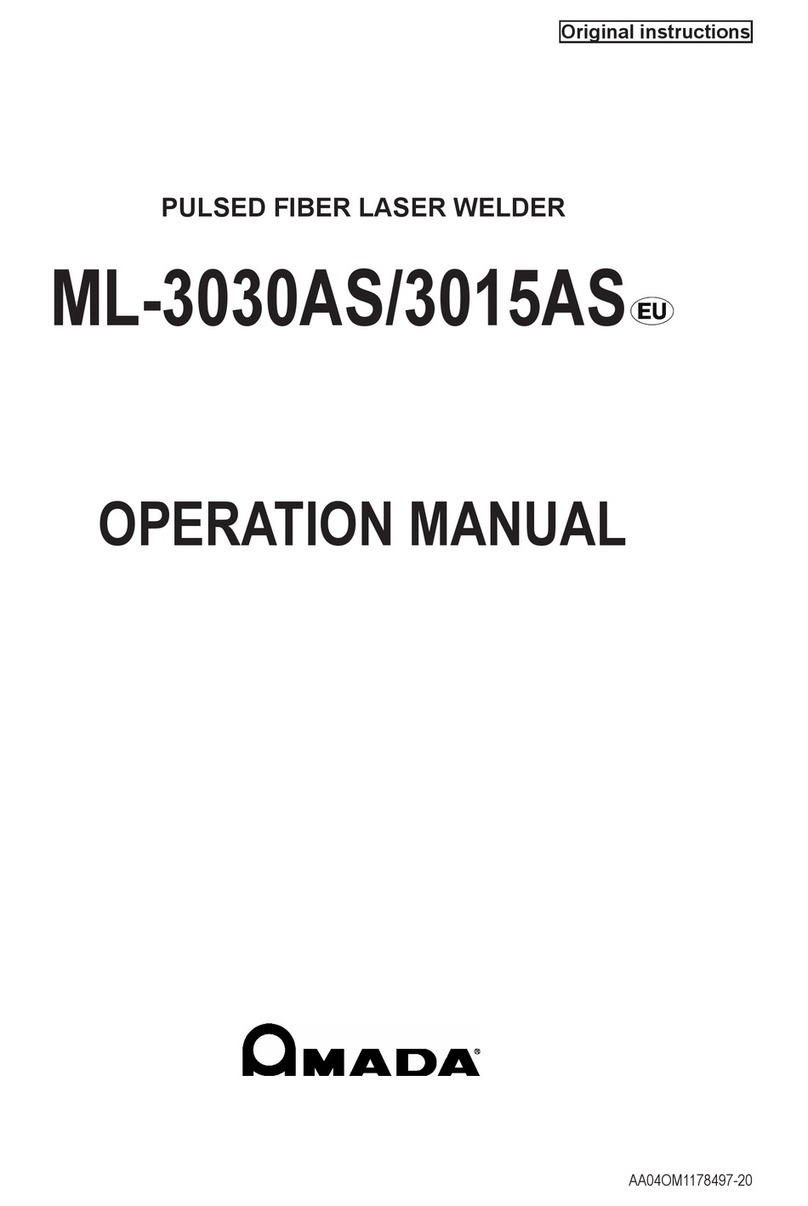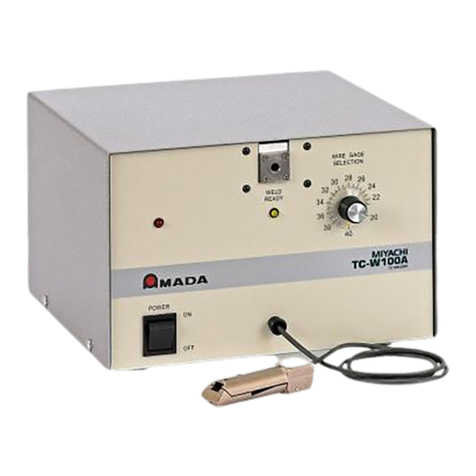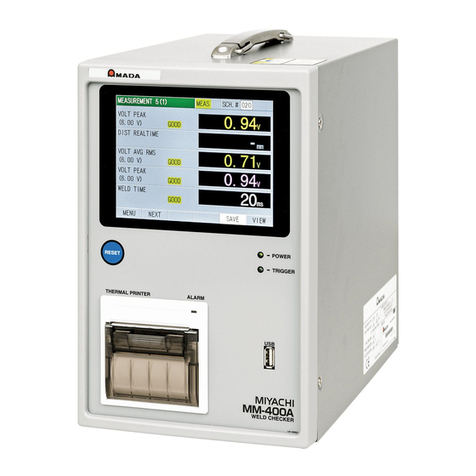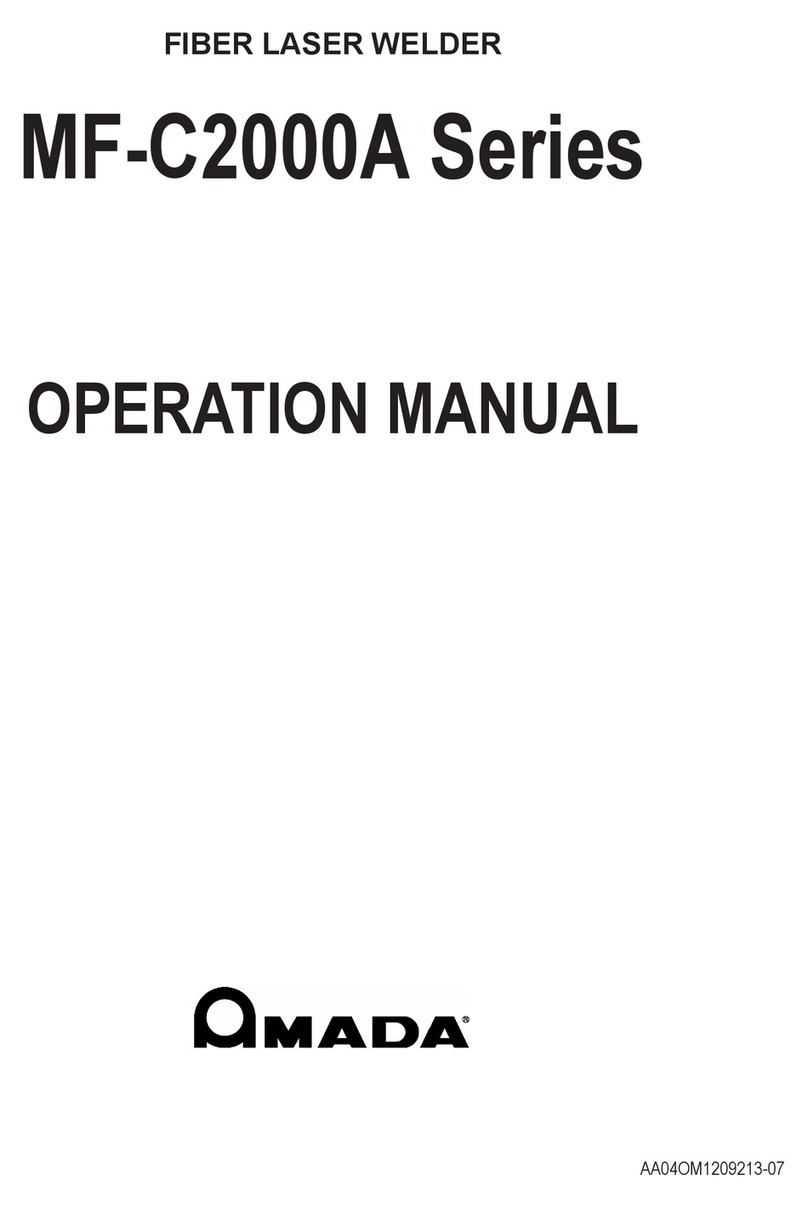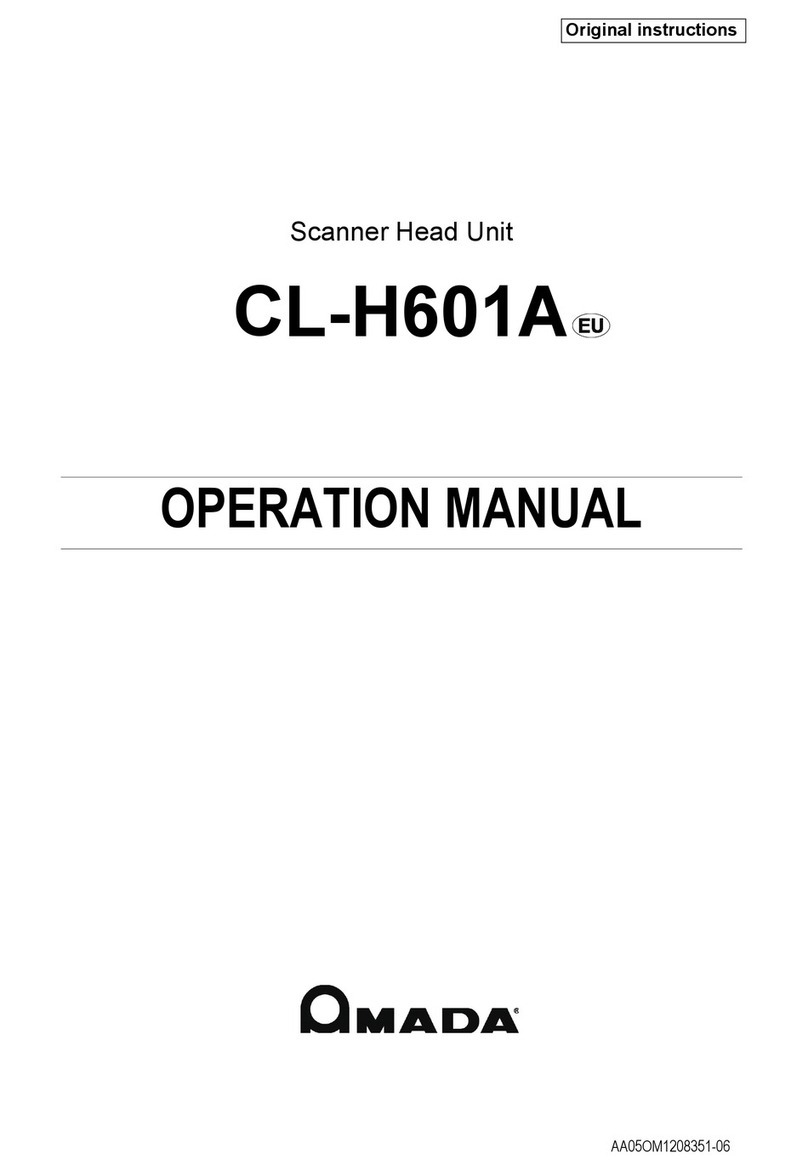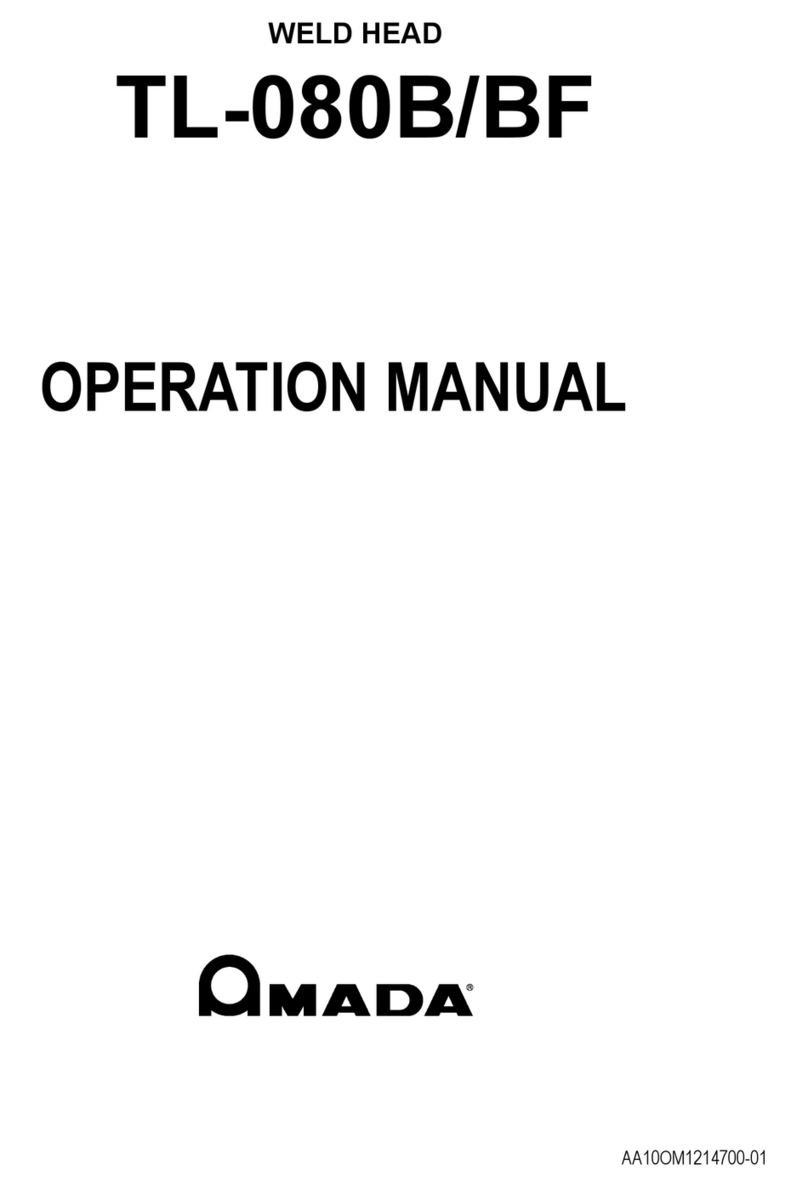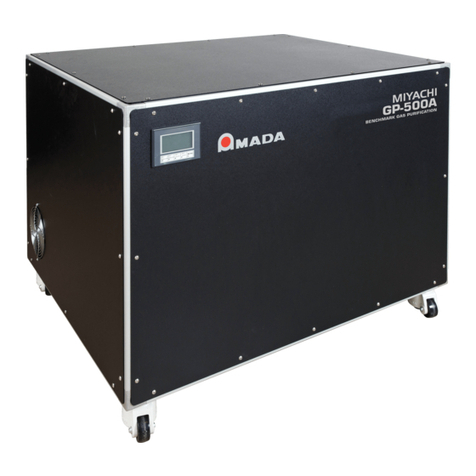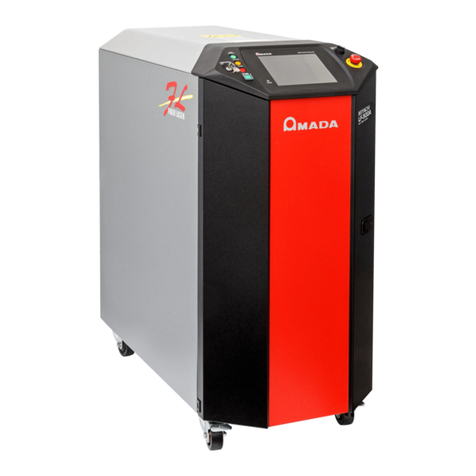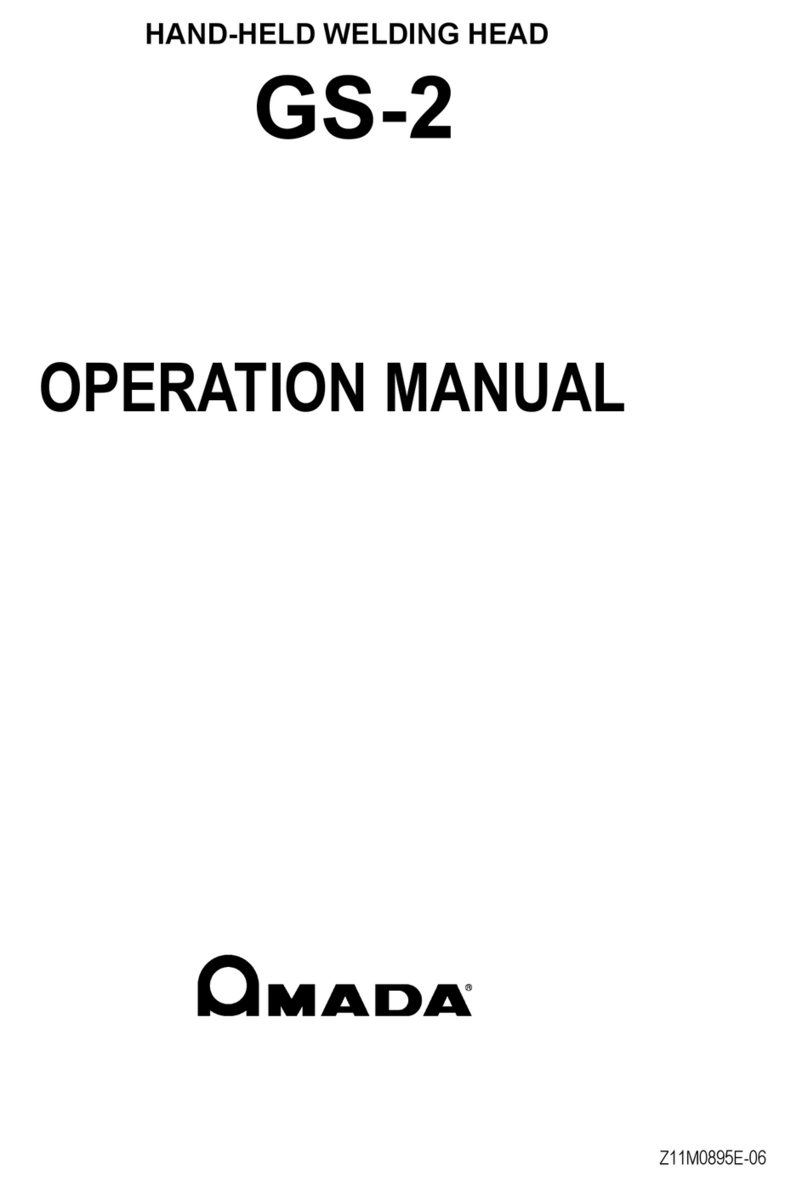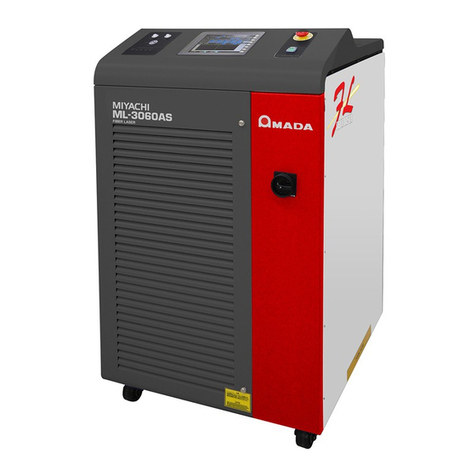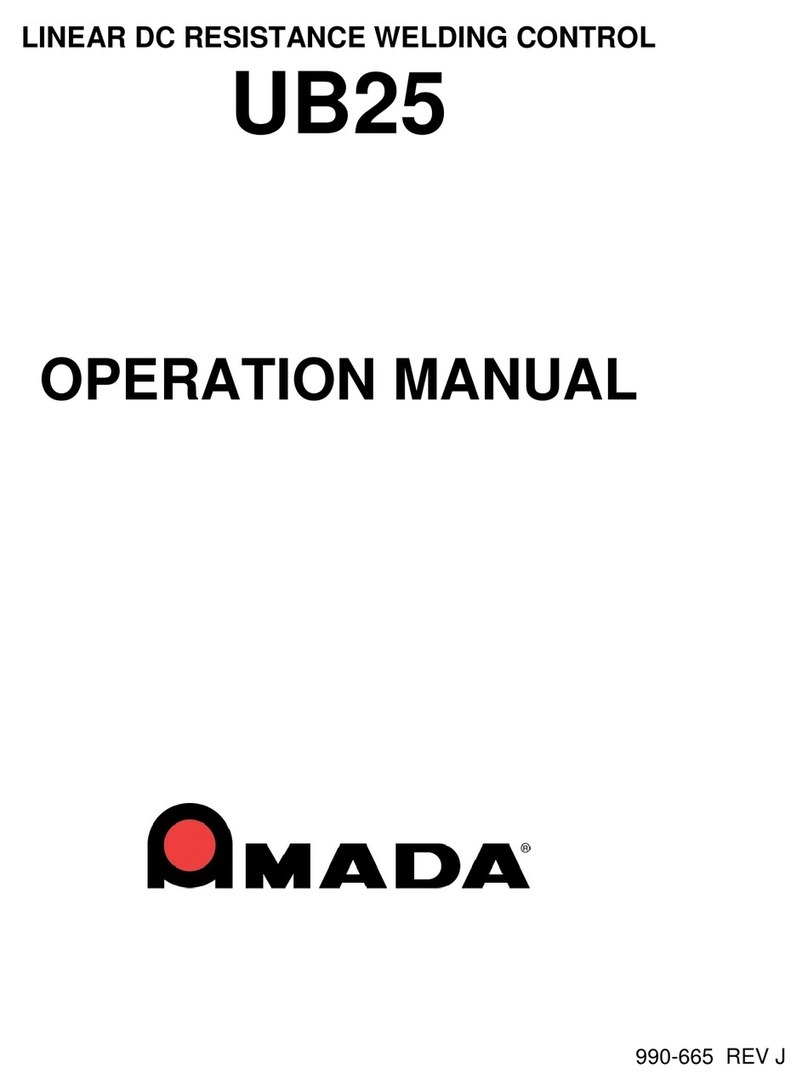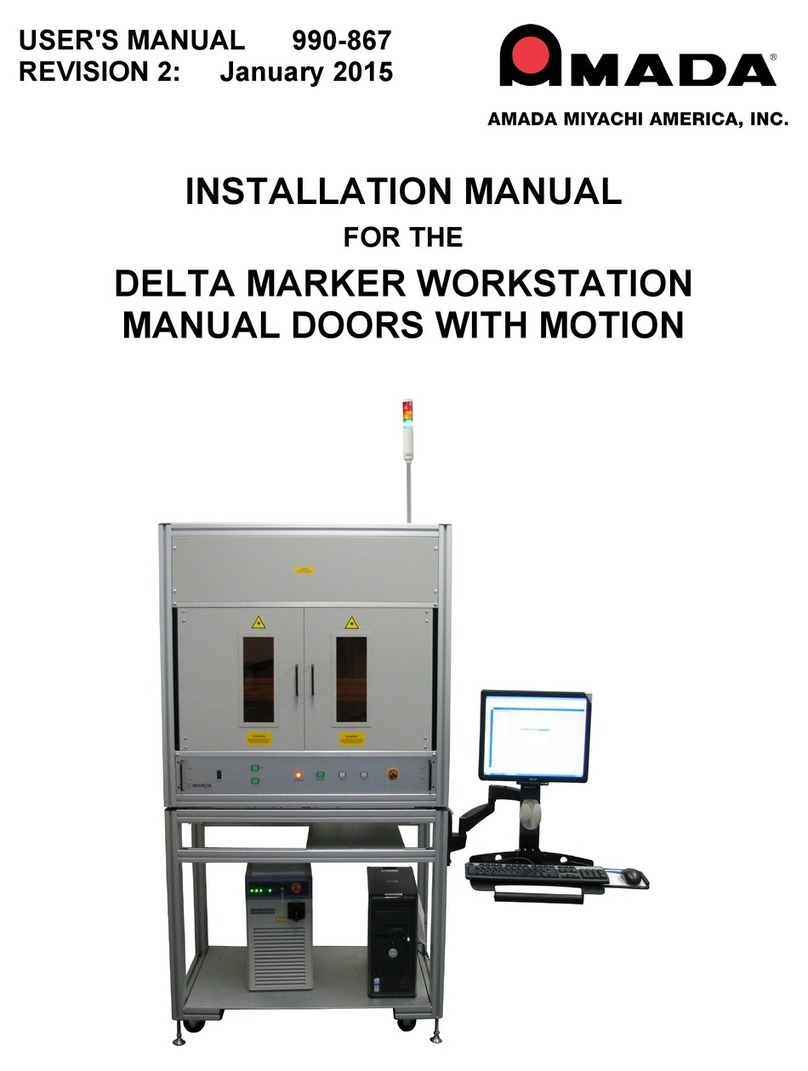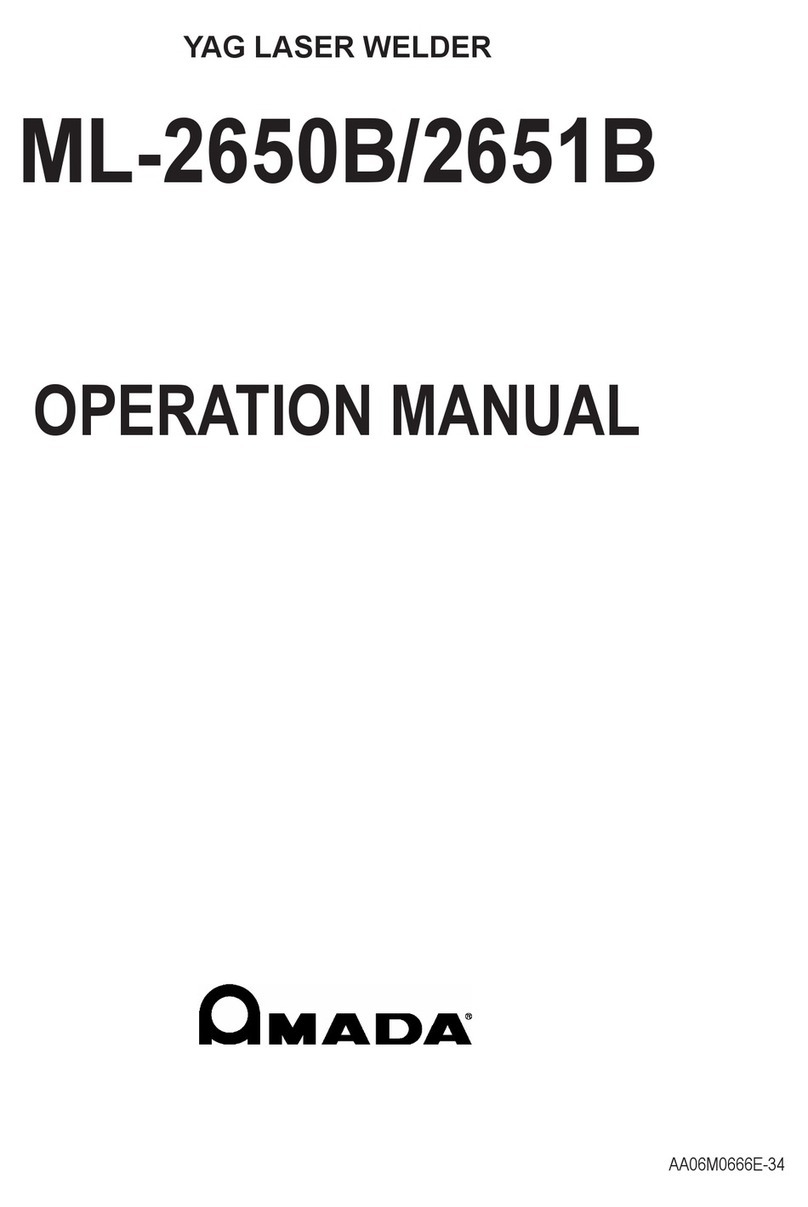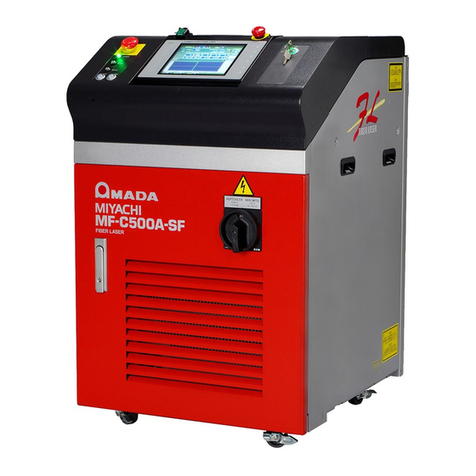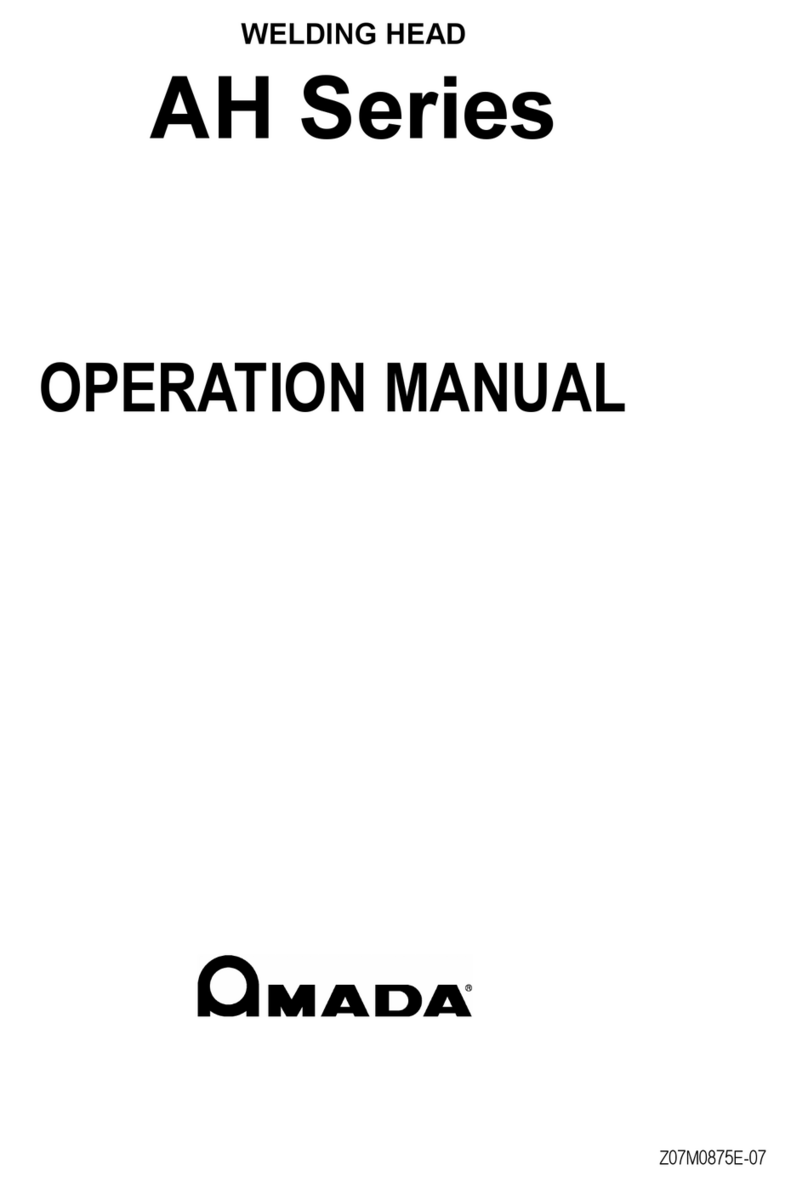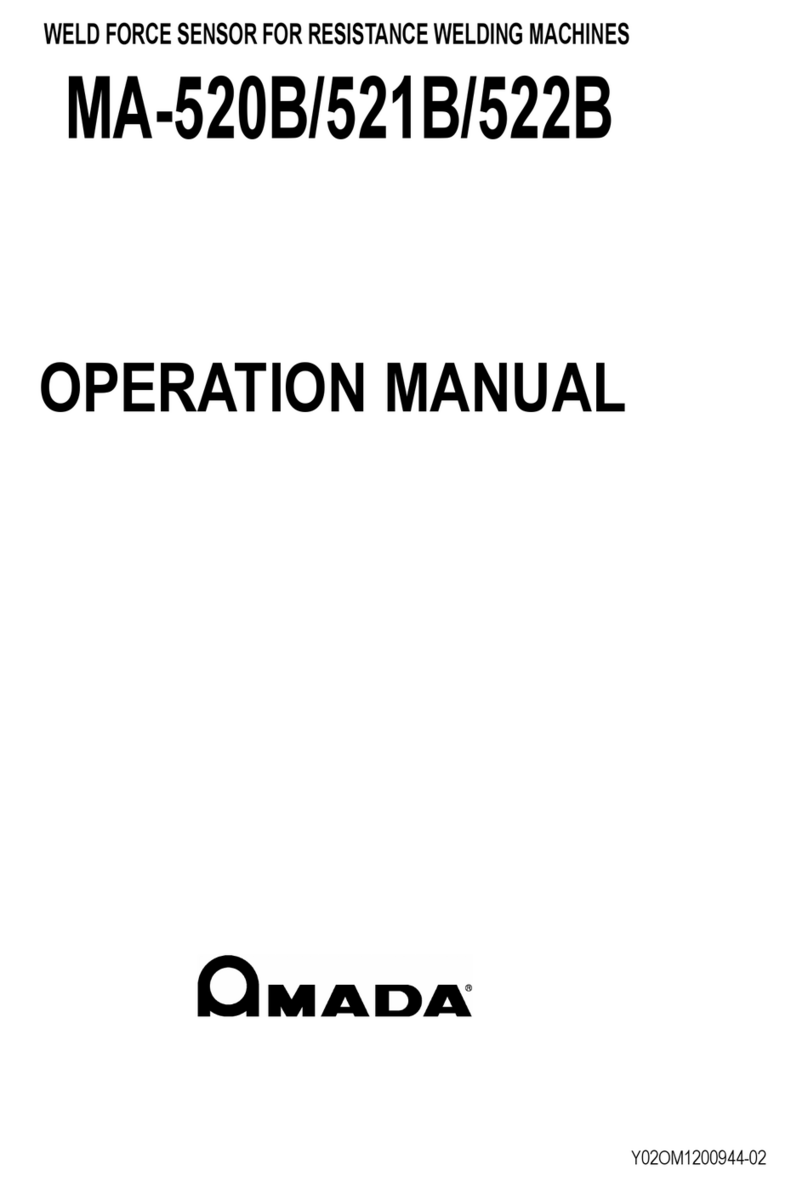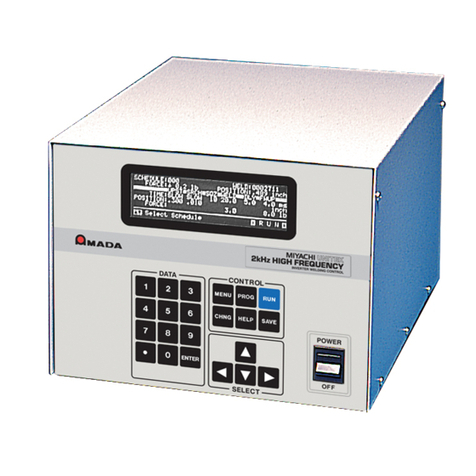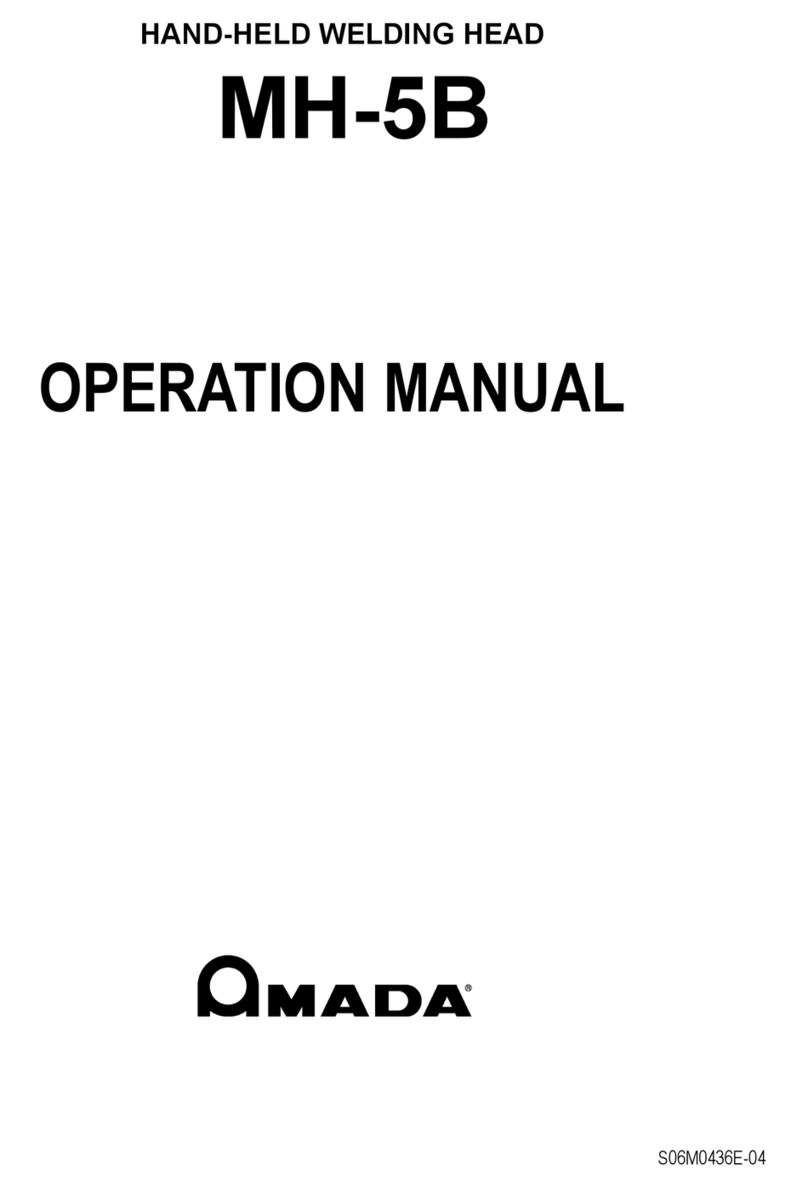
5
ML-2450A/2451A
Setting Data .................................................159
Reading Data ................................................160
Setting the Control Method, SCHEDULE No., Branch Shutter, etc. .......167
Setting the Mirror of the Timesharing Unit ..........................168
Reading the Control Method, SCHEDULE No., Branch Shutter, etc. ......169
Reading the Timesharing Unit Status ..............................170
Starting a Laser Light Output ....................................170
Stopping a Laser Light Output ...................................171
Stopping an Error Signal Output..................................171
Resetting the Total Number of Outputs.............................172
Resetting the Appropriate Number of Outputs .......................172
Reading Error No. at Occurrence of Trouble ........................172
Chapter 6 Printing Set Values and Measured Values ..................175
1. Printing Set Values .................................................175
2. Printing Measured Values. . . . . . . . . . . . . . . . . . . . . . . . . . . . . . . . . . . . . . . . . . . .177
3. Printing Set Values for Seam Welding ..................................178
Maintenance Part 179
Chapter 1 How to Perform Maintenance ............................181
NOTE .............................................................181
1. Maintenance Parts and Standard Intervals of Inspection/Replacement.........181
2. Maintenance of the Cooler Unit Section.................................184
Cleaning the Solenoid Valve Filter ................................184
Draining Water from the Primary Cooling Water......................186
Draining Water from the Secondary Cooling Water Tank ...............187
Changing the Ion-Exchange Resin and Replacing the Ion-Exchanger.....188
Changing the Water Filter and Secondary Cooling Water ..............191
Water Drain When the Laser Welder Is Not Used Over One Month or
the Room Temperature at the Installation Place Goes Down Below 0ºC ...192
3. Maintenance of Laser Oscillator Section ................................195
Replacing the Flashlamp .......................................195
Making an Incident Beam Adjustment of the Optical Fiber ..............199
Cleaning the Optical Fiber ......................................199
Cleaning the Optical Parts ......................................200
4. Maintenance of the Power Supply Section...............................201
Replacing the Lithium Battery for Backup...........................201
Cleaning the Air Filter ..........................................202
Chapter 2 Inspection and Measure To Be Taken at Occurrence of an Error . 203
1. Error Display and How to Take a Measure...............................203
Operation for Closing Interlock ...................................208
2. Troubles not Displaying Fault Code ....................................208
Appendixes 209
Specications .......................................................211
Dimensional Outline Drawings ..........................................213
Available Output .....................................................214

